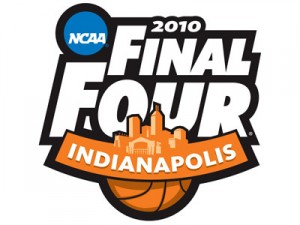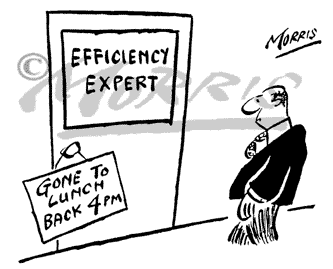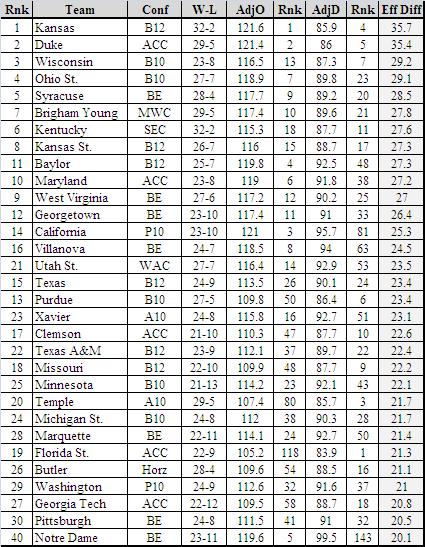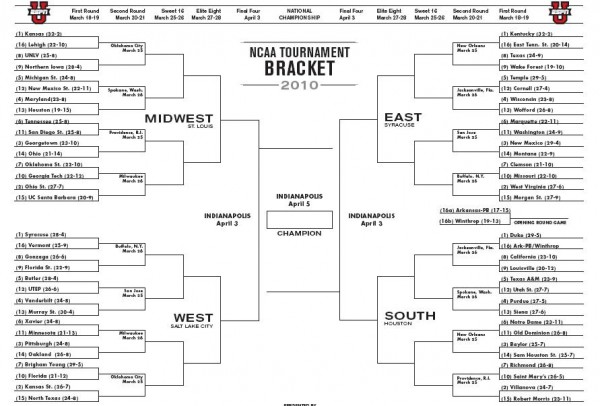First Round Game Analysis: Friday Afternoon
Posted by rtmsf on March 17th, 2010Over the next two days in a series of separate posts, RTC will break down all 32 of the first round games using our best analytical efforts to understand these teams, the matchups and their individual strengths and weaknesses. Our hope is that you’ll let us know in the comments where you agree, disagree or otherwise think we’ve lost our collective minds. Here are the Friday afternoon games.
12:15 pm – #2 West Virginia vs. #15 Morgan State (Buffalo pod)
West Virginia enters the NCAA Tournament as one of the hottest teams in the nation. They squeaked out an enormous road win at Villanova to end the regular season then swept through Cincinnati, Notre Dame and Georgetown en route to a Big East championship riding the heroics of Da’Sean Butler. The Mountaineers are an extremely gifted rebounding team; in fact, sometimes their best offense comes after a missed shot. They feature multiple weapons that can step out and shoot a mid-range jumper or three from Wellington Smith to Kevin Jones to the all-around dynamo Butler. Also, few teams can match West Virginia’s intensity in the halfcourt defensively. Morgan State head coach Todd Bozeman will need a gigantic scoring output from their own star, Baltimore native Reggie Holmes. Holmes scored 25 or more points fifteen times this season, averaging 21.3 PPG and ranking in the top-50 in percentage of shots taken. The Bears also feature a rugged forward named Kevin Thompson who comes in at fifth in the nation in offensive rebounding percentage. In fact, Morgan State ranks 11th in the country as a team in that very category. Unfortunately for the underdogs, West Virginia is never outworked on the glass, not with Jones, Devin Ebanks and Bob Huggins prominently involved.
The Skinny: This one shouldn’t be close from the tip. Morgan State dominated the MEAC all season, but West Virginia is flying high at this point. Expect the Mountaineers to dominate by 25-30 points.
12:25 pm – #6 Xavier vs. #11 Minnesota (Milwaukee pod)
The answer to which team will win this game depends entirely on which Gopher team shows up to play in Milwaukee. Will it be the defensive juggernaut that held Purdue to 11 first half points last Saturday, or will it be the team that got obliterated by Ohio State 52-29 in the second half on Sunday? Tubby Smith’s team has been schizophrenic like that all year, following up strong wins with disastrous performances (two losses to Michigan? really?), which probably explains why they were a bubble team up until Sunday evening. Xavier comes into this one with the stronger resume, but it’s difficult to say if the Musketeers are the better team. When he plays under control, XU’s Jordan Crawford is a talent, and his supporting case of Jason Love on the interior and Terrell Holloway running the show makes for nice balance throughout the Xavier lineup. The question we have is who will win the defensive battle, though. Xavier defends the three really well, while Minnesota behind Blake Hoffarber and Lawrence Westbrook both shoot it equally as well. This game is essentially a tossup (Vegas agrees, setting Minny as a one-point favorite), and we really liked the first seven halves of basketball that the Gophers put up in Indianapolis on a neutral floor last week, so we’re going with the extremely mild 6/11 upset here, in a close game that comes down to the last possession.
The Skinny: Despite the seedings, this is a tossup game and we like the Gophers to win it on the last possession.

















































